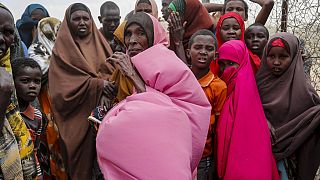UNICEF
Nearly half a billion children around the world are now living in regions that experience at least twice as many extremely hot days as their grandparents did, according to a new analysis by the United Nations Children’s Fund (UNICEF). This alarming statistic highlights the rapid escalation of extreme heat events, with 1 in 5 children—around 466 million—now exposed to these dangerous conditions every year.
The UNICEF analysis compares data from the 1960s with the average from 2020-2024, revealing a dramatic increase in the number of extremely hot days—defined as those exceeding 35 degrees Celsius (95 degrees Fahrenheit). This trend poses a serious threat to the health and well-being of nearly half a billion children, many of whom live in areas lacking the necessary infrastructure or services to cope with such extreme temperatures. “What used to be the hottest summer days are now the norm,” stated Catherine Russell, UNICEF’s Executive Director. “This surge in extreme heat is disrupting children’s health, well-being, and daily lives.”
Country-level data from the analysis shows that in 16 nations, children now endure over a month of additional extremely hot days each year compared to six decades ago. In South Sudan, for example, the average number of extremely hot days has risen from 110 in the 1960s to 165 today, while in Paraguay, the number has nearly doubled from 36 to 71.
Globally, children in West and Central Africa are facing the highest exposure to these dangerously hot days, with significant increases over time. The analysis indicates that 123 million children—representing 39% of children in the region—now experience extreme temperatures for more than one-third of the year. Countries such as Mali, Niger, Senegal, and Sudan are particularly affected, with children enduring over 195 extremely hot days annually. In Latin America and the Caribbean, nearly 48 million children are living in areas where the number of extremely hot days has doubled.
Exposure to extreme heat poses unique health risks, particularly for children and pregnant women. Without proper cooling interventions, heat stress can lead to severe health complications, including pregnancy-related issues, malnutrition, and an increased vulnerability to diseases such as malaria and dengue. The prolonged exposure to extreme heat also has long-term impacts on children’s neurodevelopment, mental health, and overall well-being.
The analysis also highlights the growing frequency, severity, and duration of heatwaves, which are becoming more common across the globe. More than half of the children in 100 countries now experience twice as many heatwaves as they did 60 years ago. In the United States alone, 36 million children are exposed to double the number of heatwaves, with 5.7 million facing three times as many.
The impact of climate-related hazards on children is further compounded by issues such as food and water insecurity, infrastructure damage, disrupted services, and displacement. The severity of these impacts is often exacerbated by underlying vulnerabilities, including socioeconomic status, gender, location, and existing health conditions.
As the world looks ahead, there is an urgent need for action. All Member State Parties to the Paris Agreement are required to submit new national climate plans, known as Nationally Defined Contributions (NDC 3.0), in the coming months. These plans will chart the course for climate action over the next decade and represent a critical opportunity to set concrete measures in place to meet the goals of the Paris Agreement.
UNICEF is calling on leaders, governments, and the private sector to seize this moment and commit to bold and urgent climate action that upholds the rights of every child to a clean, healthy, and sustainable environment. The organization is urging for the following actions:
1. Reduce emissions and urgently meet international sustainability and climate change targets to stabilize rising temperatures.
2. Protect children’s lives, health, and well-being by adapting essential social services to withstand a changing climate, more frequent disasters, and environmental degradation. This includes ensuring that health workers are trained to detect and treat heat stress and making health and education facilities resilient to extreme heat.
3. Empower children with education, skills, and opportunities to become advocates for the environment throughout their lives.
“Children are not just small adults; their bodies are much more vulnerable to extreme heat,” Russell emphasized. “Rising temperatures pose a particular risk to children, especially babies, whose bodies heat up faster and cool down more slowly. Governments have a critical opportunity to act now, as they draft their national climate action plans, to ensure that today’s children and future generations can thrive in the world we leave behind.”













00:10
UNICEF urges action as child humanitarian crisis deepens
01:10
An estimated five million children displaced by Sudan's civil war
01:52
Nigeria: Abducted schoolchildren reunite with families as over 150 remain captive
00:52
France and Nigeria to strengthen relations amid Nigerian security crisis
01:45
Nigerian parents of abducted children say they are being kept in dark
01:43
Nigeria: Families of missing children frustrated over frequent school abductions